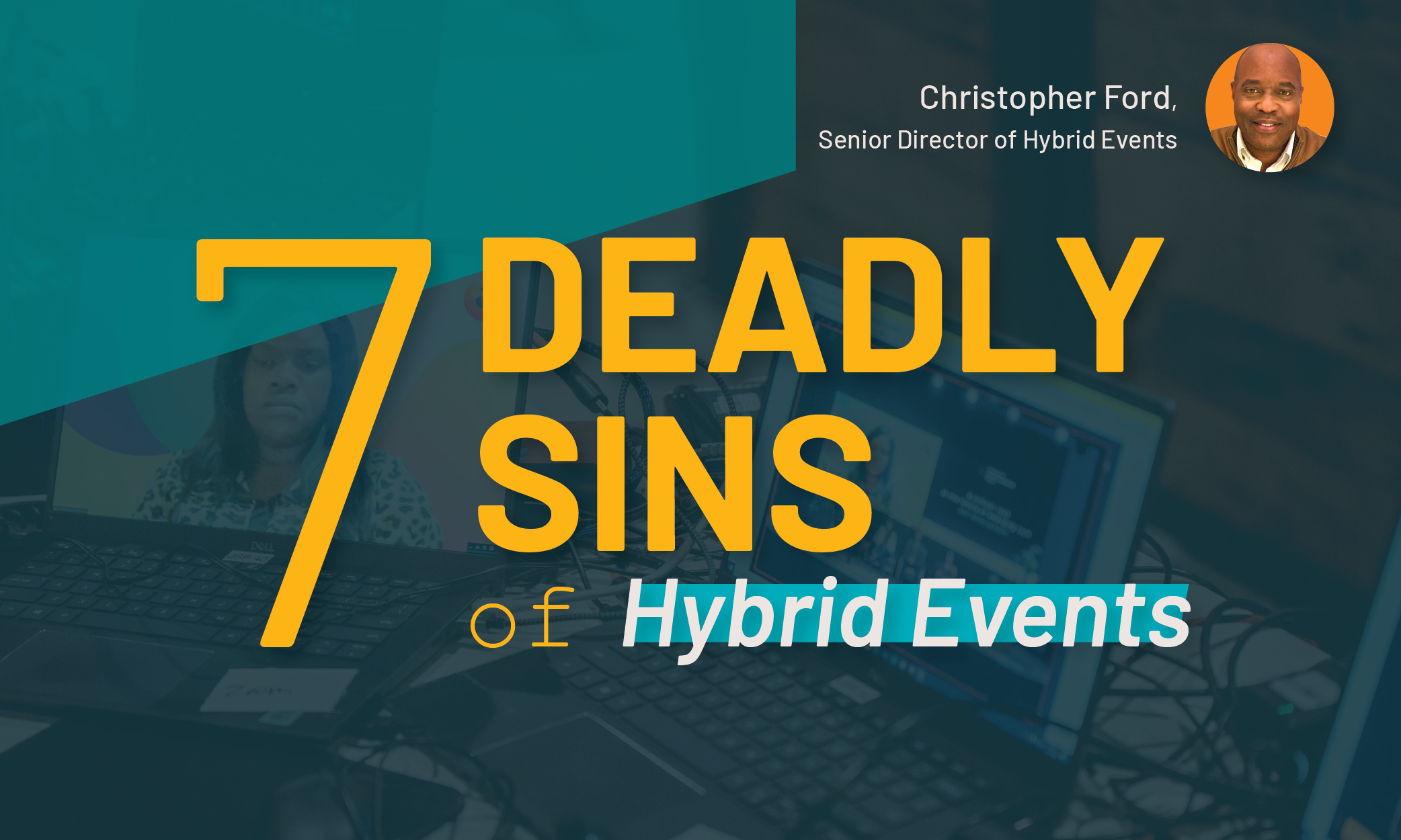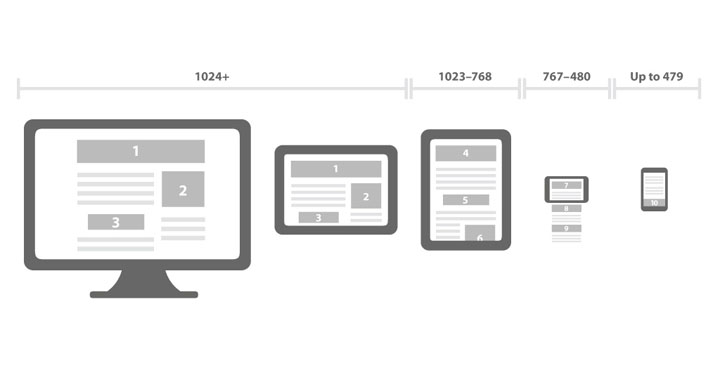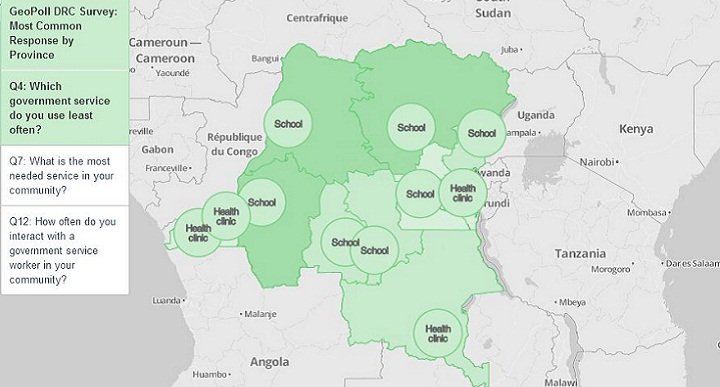By: Christopher Ford, Senior Director of Hybrid Events
Before embarking on my current role as Senior Director of Hybrid Events at TechChange, I had already clocked in more than 20 years in the events industry. Over the years, I’ve seen the events industry from almost every angle.
I’ve been the event manager in search of critical event services. I’ve been on the venue side and seen how exceptional event planners execute a seemingly flawless meeting. I’ve executed meetings that range in format, size, location, budget, and subject matter and dealt with the complex in and outs of events with guests from the White House and A-List celebs to events with hundreds of demanding attendees, all with a unique set of challenges, requirements, and expectations.
And while there are some basic fundamentals to every event, the execution will be different every time because of the objective of the event, the venue, the attendees, etc. No event is ever exactly the same, even ones that happen year after year. That is more true than ever now with the rise of hybrid events.
However, there are some steps you can take to avoid common pitfalls in the new hybrid events world. I refer to these pitfalls as the “seven deadly sins” and it’s all too easy to make during event planning.
Sin #1 – Virtual attendees become “ghost” attendees.
Virtual attendees face unique challenges when it comes to engagement and participation. Because they’re not in the room, they may not have access to the same level of interaction as in-person attendees. Don’t let your virtual participants drop off the map!
Bring virtual attendees into the conversation and ensure that their voices are heard through live Q&A sessions, polls and surveys, interactive breakout sessions, networking opportunities, and other engagement activities.
By uniquely seeking ways to include virtual attendees in the conversation, organizers can create a more collaborative and dynamic event experience for everyone involved. This not only helps to build stronger connections between attendees, but it also ensures that all attendees feel valued and heard.
Sin #2 – Your virtual and in-person experiences = two roads that never meet.
This new event tool we call hybrid has two components: the first is you have two sets of distinct audiences – the virtual and the in person – both with distinct reasons for choosing their participation format. The second component is the two audiences need to have some shared experiences to make the one event a truly hybrid experience. A common mistake is not recognizing that the in person experience and the virtual experience will never be exactly the same. You can’t take your in-person agenda and simply live stream it to the on-line audience. Vice-versa, the in-person attendee can’t participate in a critical chat discussion on-line during a keynote and can miss out on important voices. You have to create content that engages both audiences in their unique setting – and then bring them together.
At the end of the day, people attend meetings and conferences to make connections. If there’s no networking across in-person or online participants or being able to attend sessions together, people leave without a significant sense of having attended the same event and one group or the other feels slighted.
Sin #3 – An agenda that clings to the beaten path.
In this post-pandemic world, on-line participants have become exceptionally savvy in a short amount of time. So, simply live streaming a Zoom call won’t keep your audience engaged.
Keep your attendees from Zoom fatigue by incorporating a mix of different session types and experiences. This can include a combination of keynote speakers, panel discussions, breakout sessions, interactive workshops, networking opportunities and on-demand (or asynchronous) sessions.
Get creative with your content, your format, your media, and your interactivity! Your audience will thank you for it, and you’re far less likely to experience the “Day 2 Drop-Off” that is all too common in hybrid event participation.
Sin #4 – Accessibility as an afterthought.
Accessibility considerations can vary widely depending on the needs of individual attendees. For example, in-person attendees may require wheelchair accessibility, while virtual attendees may require closed captioning or other assistive technologies. You have to consider both!
By taking a proactive approach to accessibility, event organizers can ensure that all attendees have the resources they need to fully participate in the event.
Some key accessibility considerations for hybrid events include:
- Providing accessible transportation and parking options for in-person attendees
- Offering closed captioning, sign language interpretation, or other assistive technologies for virtual attendees
- Ensuring that all event materials, including presentations and handouts, are accessible to attendees with visual impairments or other disabilities – or materials are available for download for on-line attendees
- Designing event spaces to be wheelchair accessible and accommodating to attendees with mobility issues
- Providing clear instructions and guidelines for accessing the virtual experience and participating in sessions
Sin #5 – Taking a “let’s just…” approach to technology.
In my opinion, the phrase, “let’s just…” should be stricken from every planner’s vocabulary. It implies that the person isn’t thinking strategically or creatively. Taking a “let’s just” approach to technology will kill the hybrid event experience for all participants.
Remember, technology is the thing that connects your two audiences and makes the hybrid experience unique for both in-person and on-line attendees. Consider elevating your production quality for high-profile speakers or for your opening and closing plenaries; this is where both audiences are typically more engaged and excited. Keynotes and open and closing plenaries have a big impact on attendees overall experiences. Plan and budget for graphic elements like animation, bumpers, music, and other graphics that bring cohesion and excitement for the entire audience experience.
Conversely, overcomplicating the technical is just as bad as under conceptualizing the tech. It’s easy to get caught up in the latest technology and want to incorporate all the bells and whistles into our events. However, the more complicated the setup, the higher the chance of technical issues occurring during the event.
Attendees don’t want to spend their time troubleshooting technical difficulties. They want to focus on the content and the overall experience of the event. Overcomplicating the technical aspects of hybrid events can detract from the overall experience and even cause attendees to tune out.
Sin #6 – Throwing attendees into the deep end without a floatie
As an event organizer, your job isn’t just to plan and execute – it’s also to ensure that attendees have a smooth and seamless experience. This means providing clear instructions for how to access the event platform, how to navigate the conference agenda, and how to engage with other attendees.
When attendees are left to figure things out on their own, they become frustrated or disengaged. Providing resources and instructions upfront, you set them up for success and ensure that they get the most out of their experience.
Consider creating a welcome packet or guide that includes all of the information attendees need to know. This could include instructions for logging in, tips for networking, and a detailed agenda with links to each session. Make sure to provide resources for troubleshooting common issues, such as slow internet speeds or trouble accessing the platform – and make these available ahead of time so attendees are not scrambling seconds before your keynote speaker takes the mainstage.
By taking the time to provide these resources and instructions, you can show attendees that you value their time and are invested in their success. When attendees have a positive experience, they’re more likely to return for future events and recommend your event to others.
Sin #7 – Overlooking inclusivity and keeping important voices out of the conversion because they’re not in the “room”
Hybrid events provide a unique opportunity to connect with people both in-person and virtually, but we must ensure that everyone has equal access and feels welcome.
When planning a hybrid event, make sure that all aspects of the event, from registration to networking opportunities, are accessible and accommodating for all audiences, whether they’re in-person or on-line.
Inclusion is not just a buzzword – it’s an important aspect of creating a successful and impactful event. By prioritizing inclusion and accessibility, we create a more welcoming and diverse event where attendees feel valued and empowered.
A final word…
I am incredibly proud that we apply these best practices to each and every event we support at TechChange, particularly as we expand our hybrid portfolio. In doing so, we are making each event more accessible, engaging, and inclusive than the last. Not to mention more sustainable. But, I’ll save that for another blog post!




